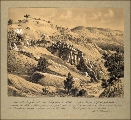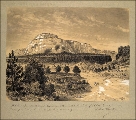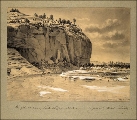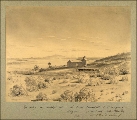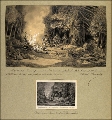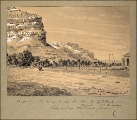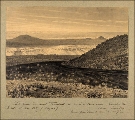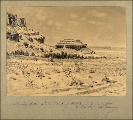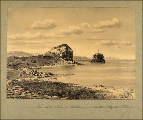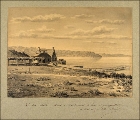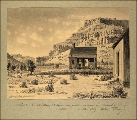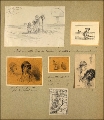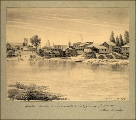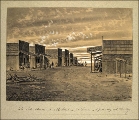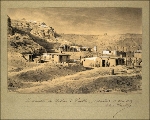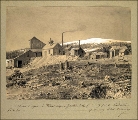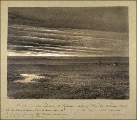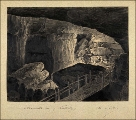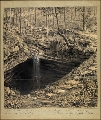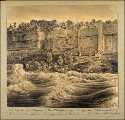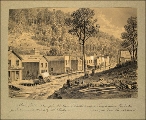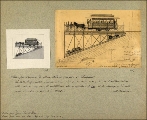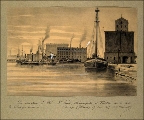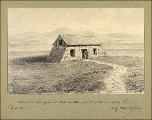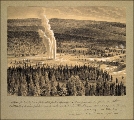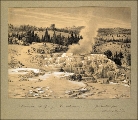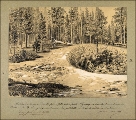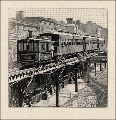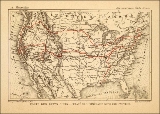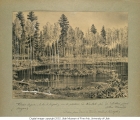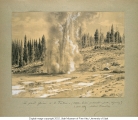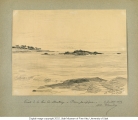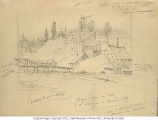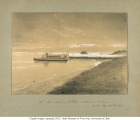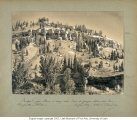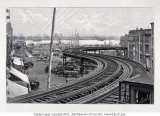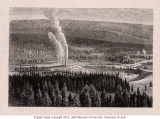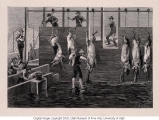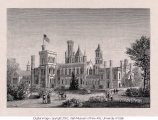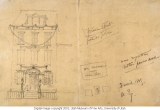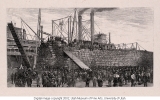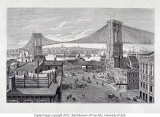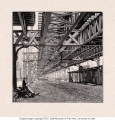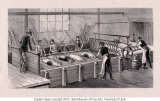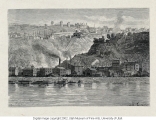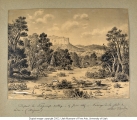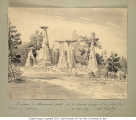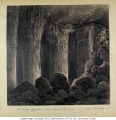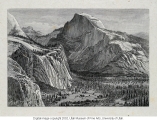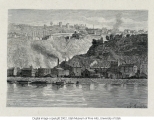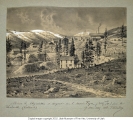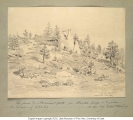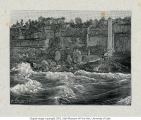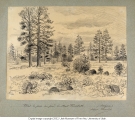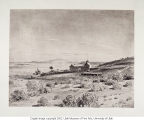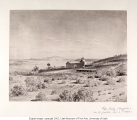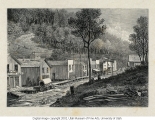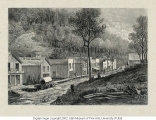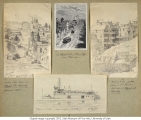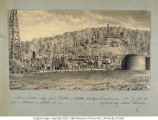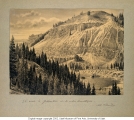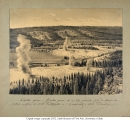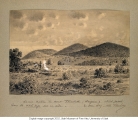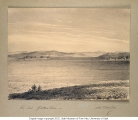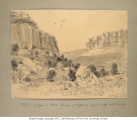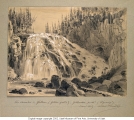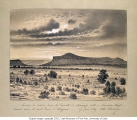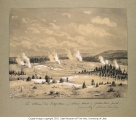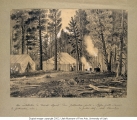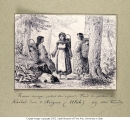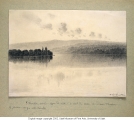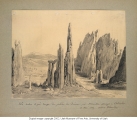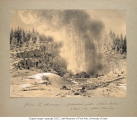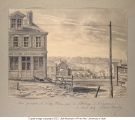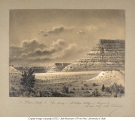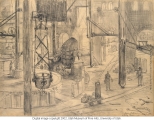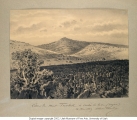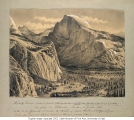| Identifier |
1978_328_madisonSquare.jpg |
| Title |
The Grand Light Designed by Brush and Swann at Madison Square |
| Alternate Title |
Le grand mat de Madison Square avec les six lumières Brush et Swann, New York |
| Creator |
Tissandier, Albert 1839-1906 |
| Subject |
Lampposts--New York (State)--New York--1880-1890; Parks--New York (State)--New York--1880-1890; Madison Square Park (New York, N.Y.)--1880-1890; Madison Square Presbyterian Church (New York, N.Y.)--1880-1890; Cities & towns--New York (State)--New York--1880-1890 |
| Description |
A view across Madison Square Park showing several dozen people strolling or sitting on park benches near the Brush light pole; the upper portion of Madison Square Presbyterian Church can be seen in the background. Associated text from Albert Tissandier's book Six mois aux États-Unis : voyage d'un touriste dans l'Amérique du nord suivi d'une excursion à Panama (Paris : G. Masson, [1886]), p. 14: "Les autres parties de la ville sont éclairées par les Compagnies Brush et Swan. Elles s'occupent principalement de l'illumination des rues et des places publiques. A Madison Square, entre autres, on peut admirer la grande couronne de lumière composée de six lampes qui se trouve suspendue en haut d'un mât de 50 mètres environ. Elles envoient leurs feux dans toute la place, et sous les beaux arbres du jardin on croirait volontiers à un clair de lune perpétuel. On monte tous les soirs cette couronne à l'aide d'une manivelle actionnant des poulies; le matin on la redescend à la hauteur du balcon pour réparer ou nettoyer les appareils. Sur la place du Carrousel de Paris l'appareil électrique offre un aspect agréable comme lumière, mais il est moins élevé et l'éclairage est loin d'être aussi intense que les lampes Brush dont Madison Square est pourvu." |
| Published Location |
Reproduced in the exhibition catalog, Albert Tissandier : Drawings of nature and industry in the United States, 1885, by Mary F. Francey ([Salt Lake City, UT] : Utah Museum of Fine Arts, 2001), p. 17. |
| Short Essay |
Most of New York City's growth coincided with the Industrial Revolution in the mid-nineteenth century. Since then the city has become the largest in the United States. Because of its rapid growth and crowded living conditions, the 1,500 public parks became important recreation areas for the city's burgeoning population. In 1885 migration to the United States numbered five million people, many of whom ventured no further than New York City. Albert Tissandier has depicted figures strolling leisurely through Madison Square, a park that was illuminated at night by the electric lights at the top of the tower. The tower was crowned with six Brush and Swann lanterns that were raised every evening. Charles Francis Brush, an American inventor, and Sir Joseph Wilson Swann, English inventor, chemist and electrician invented the Brush and Swann Lamp. It was first patented in England in June 1884, and an American patent was issued in March 1885, the month before Tissandier's drawing of the Madison Square tower. The six Brush and Swann lights were raised to the top of the tower nightly by a hydraulic crankshaft. By 1889 Brush Electric had merged with the Thomas Houston Electric Company to finally form the General Electric Company in 1892. The entry in Tissandier's journal that refers to this drawing reads: "The Brush and Swan companies who deal primarily with illumination of streets and public places have installed lighting systems in other parts of the city. At Madison Square, among others, one can admire the large crown of light composed of six lamps suspended at the top of a pole about 50 meters high. These lamps send their light through the whole square, and under the beautiful trees of the garden one would be apt to believe in a state of perpetual moonlight. This crown is raised every day at dusk by means of a crank operated by pulleys, and lowered each morning to the height of the balcony in order to facilitate cleaning and repair of the device." It is not surprising that Tissandier found the extent and quality of illumination made possible by electricity remarkable. Since the city of Paris had not yet been electrified in 1885 it is unlikely that he would have seen an outdoor lighting system equal to that of Madison Square. |
| Publisher |
Utah Museum of Fine Arts |
| Contributors |
Mary F. Francey |
| Date |
1885-04-06 |
| Type |
Image |
| Format |
application/pdf |
| Source |
Albert Tissandier: Drawings of Nature and Industry in the United States |
| Language |
fra |
| Rights Management |
Digital image c2001 Utah Museum of Fine Arts, University of Utah |
| Source Physical Dimensions |
34.29 cm High x 26.04 cm Wide |
| Source Characteristics |
Graphite on paper |
| Light Source |
Kaiser Softlite ProVision 6x55W flourescent 5400K daylight |
| Archival Resolution |
TIFF: 3241 x 4087 pixels |
| Display Resolution |
JPEG: 900 x 1263 pixels |
| Bit Depth |
36-bit color |
| Scanning Device |
Leica S1 Pro scanning camera; Hasselblad CFi 50mm F/4 lens; f/11 |
| Exhibit Catalog |
ISBN: 0-9657215-0-7; Library of Congress Catalog Number: 2001094211 |
| Setname |
uu_umfa_at |
| ID |
415826 |
| Reference URL |
https://collections.lib.utah.edu/ark:/87278/s6bk1cds/415826 |

